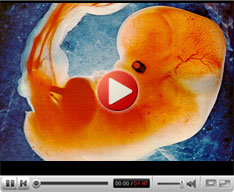Reactive Oxygen Species (ROS)
Oxidative stress is one of the most common problems seen in most infertile men. Occurrence of oxidative stress is a result of cellular damage due to the production of excessive, potentially destructive reactive oxygen species (ROS) that are incapable to being destroyed by the body's antioxidant defense mechanisms. In moderate concentrations, ROS help prepare the sperm for fertilization. However, increased levels of ROS can harm other cells. Human sperm membranes are highly sensitive to ROS-related damage due to their already high polyunsaturated fatty acid content. ROS which includes oxygen ions, free radicals and peroxides are normally generated by the sperm and seminal leukocytes that are present in the semen of men and cause infertility by two main processes:
- ROS causes significant damage to the sperm membrane which in turn reduces sperm motility and its natural ability to fuse with the egg
- Reduced hemorrhaging ROS can alter the DNA of the sperm, thereby causing defective paternal DNA on to the conceptus
Male factor infertility makes up half of all cases of infertility and it is believed that reactive oxygen species (ROS)-mediated damage to sperm contributes significantly to infertility in almost 30-80% of the cases. Despite the common link between poor sperm quality and oxidative damage, men are rarely assessed for oxidative stress nor suggested a suitable treatment for this condition. Instead they are advised to undertake alternate mechanical techniques such as intracytoplasmic sperm injection (IVF-ICSI) or intrauterine insemination (IUI).
Effects of ROS
In general, harmful effects of reactive oxygen species on the cell are most often:[4]
- Damage of DNA
- Oxidation of polyunsaturated fatty acids in lipids (lipid peroxidation)
- Oxidation of amino acids in proteins
- Oxidatively inactivate specific enzymes by oxidation of co-factors
Conditions caused due to ROS in Men
Increased levels of ROS can cause a number of conditions that contribute to male infertility. These include:
- Oligospermia:Oligospermia is a defect that occurs when sperm count becomes less than 20 millions/ml. High level of Reactive oxygen species, testicular pathologies like trauma, infections or tumors, hormonal defects, Varicocele, Retrogarde ejaculation are some of the factors that reduce sperm production. It is easy to chart a suitable treatment id the cause is known and treatment normally includes antioxidants and hormonal therapy.
- Asthenospermia:Asthenozoospermia is a term used to describe motility defects in the sperm. Causes of this condition include infections and hormonal problems, varicocele and increased reactive oxygen species levels. Treating this condition with antioxidants yields favorable results.
- Teratospermia:Teratozoospermia refers to morphological defects of the sperm. Infections and tumors, hormonal problems, high reactive oxygen species levels and Varicocele are the major factors contributing to this condition.
- Genital tract infection:Acute genital tract infections are known to be the possible cause of infertility in about 2 percent of men suffering from reproduction problems. The condition is normally detected during a semen analysis where white blood cells are found. White blood cells generate excess reactive oxygen species (ROS) which are known to have harmful effects and reduce the fertilizing potential of sperm. While antibiotics are generally prescribed for chronic full-blown infections, they are not generally recommended for lesser inflammations since they can be harmful to production of the sperm. In such cases, non-steroidal anti-inflammatories are usually prescribed.

















